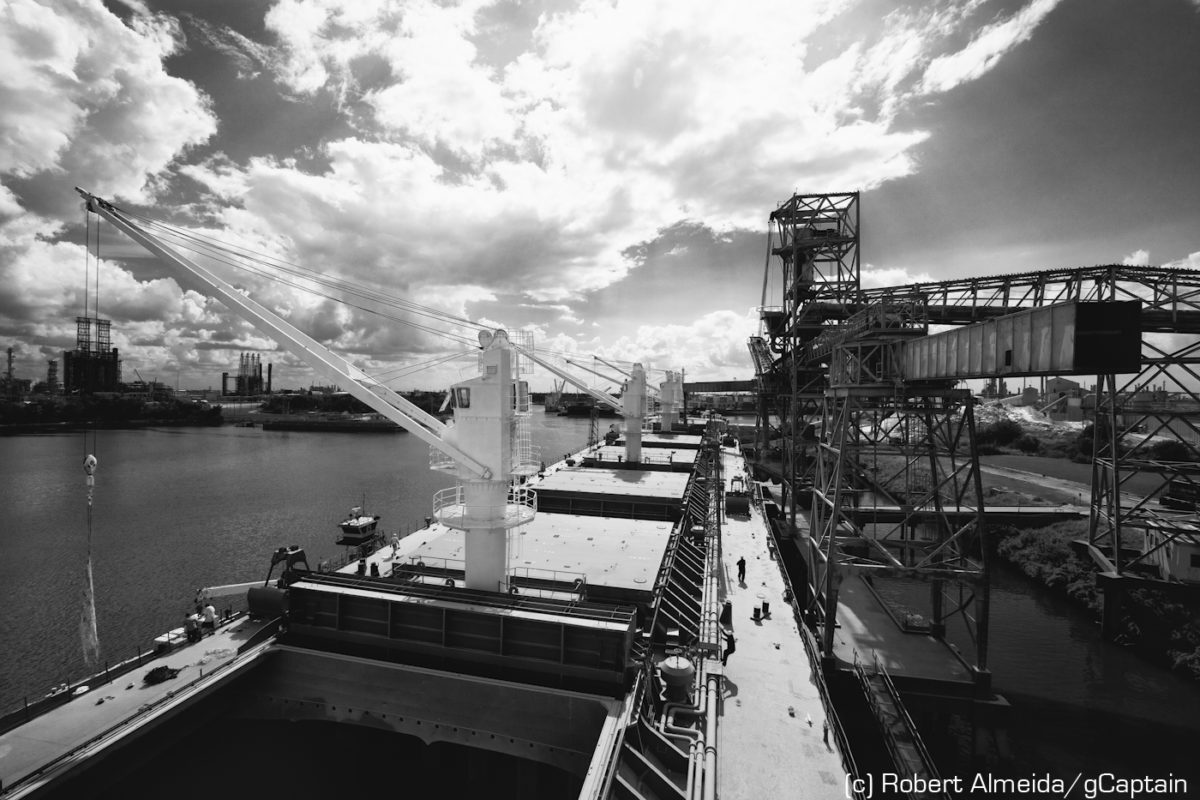Major Cocaine Bust: UK Border Force Seizes Record Shipment at London Gateway
In one of the UK’s largest drug seizures of the past decade, UK Border Force officers have seized cocaine with an estimated street value of £96 million (USD 130 million)...

A Liberty Maritime bulk carrier takes on grain destined for Sudan in the Port of Houston, image (c) Robert Almeida/gCaptain
(Bloomberg) — Daily rates for the largest commodity carriers fell for a fourth session amid a surplus of available ships to haul cargoes.
Returns for Capesizes, the largest ships hauling the steel- making ingredient, lost 6.2 percent to $6,070 a day, according to the Baltic Exchange, the London-based publisher of freight rates. That’s the lowest rate since July 3, exchange data show.
Capesize vessels slumped 78 percent so far this year, according to exchange data. The Capesize fleet expanded to a record 1,467 of the ships in service, according to data from IHS Inc., a research group based in Englewood, Colorado. The global dry-bulk fleet stands at almost 571 million deadweight tons, a record high and compares with 504.8 million tons 12 months earlier, the data showed.
“The oversupply in this sector remains very high,” Oslo- based Fearnley Securities said in an e-mailed report today.
Rates for Panamaxes, which carry about half as much as Capesizes, added 1.2 percent to $9,584 a day, the exchange said. Earnings for Supramaxes declined 0.5 percent to $13,454 and Handysizes decreased 0.6 percent to $10,005 a day.
The Baltic Dry Index, a broader measure of raw-materials shipping costs, fell for an fourth day, sliding 1 percent to 1,110 points.

Sign up for gCaptain’s newsletter and never miss an update

Subscribe to gCaptain Daily and stay informed with the latest global maritime and offshore news


Stay informed with the latest maritime and offshore news, delivered daily straight to your inbox
Essential news coupled with the finest maritime content sourced from across the globe.
Sign Up